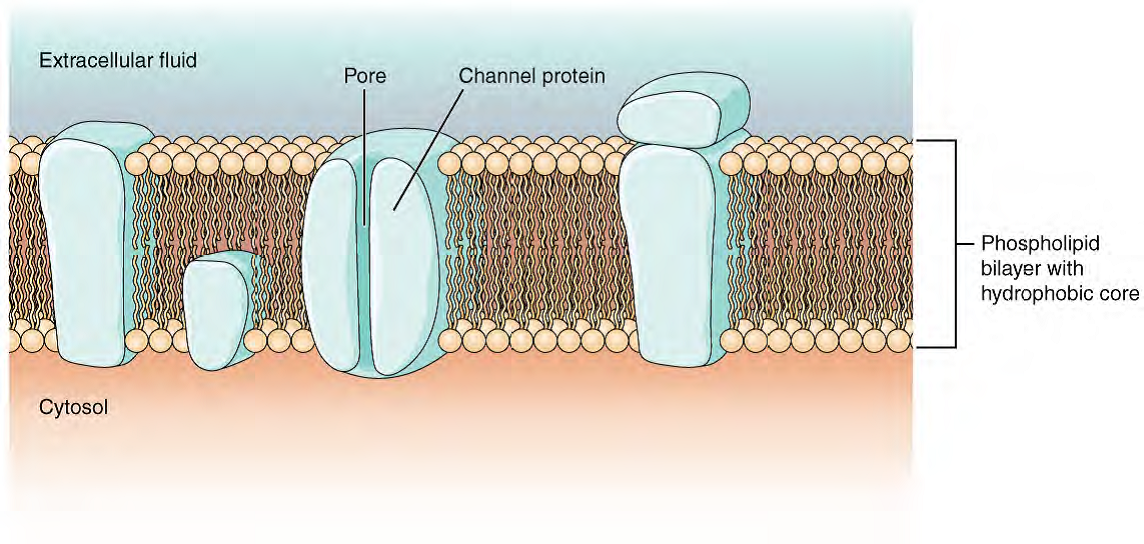The differentially (or semi-) permeable membrane creates the membrane potential. However, the membrane is not totally impermeable to sodium ions. Periodically, some sodium ions leak across the membrane and into the cell. Remember from the Cell membrane Module that the phospholipid bilayer contains protein channels to help in the transport of ions and large molecules across the membrane. This is one way the membrane in semi-permeable. These transmembrane channels consist of leak channels (like pores), chemically gated channels, voltage gated channels, etc. When we say that sodium leaks through the membrane, this happens through the protein leak channels. When an ion can move across the membrane due to electrical changes, this is due to the opening of voltage-gated channels.

Figure 3. Cell Membrane and Transmembrane Proteins .The cell membrane is composed of a phospholipid bilayer and has many transmembrane proteins, including different types of channel proteins that serve as ion channels.
There are two forces acting on the sodium ions to move them into the cell, the force of diffusion and the electrical force. There is a high concentration of sodium outside the cell and a low concentration of sodium inside the cell. This concentration gradient would tend to move sodium ions into the cell. There is also an electrical gradient at work. The positively charged ions outside the cell repel one another. There are more positive ions outside the cell than inside the cell. The sodium ions tend to want to move into the cell along this electrical gradient. Although the membrane is relatively impermeable to sodium ions, they do tend to slip across the membrane periodically along their diffusion and electrical gradients. As these positive ions move into the cell, the membrane potential would become more and more positive if something didn't correct the problem. The resting membrane potential however is maintained at -70mV even though these positive ions keep slipping into the cell. This is because there is a sodium-potassium pump at work within the cell membrane. This pump actively and continually moves sodium ions out of the cell and potassium ions into the cell. For every three sodium ions it pumps out, it pumps in two potassium ions. This sodium-potassium pump is able to maintain the resting membrane potential at -70mV even though the sodium ions leak into the cells occasionally.
When the cell is not being stimulated, it is said to be resting. However, the resting membrane potential can change as a result of stimulation. There are two types of changes in membrane potential, action potentials and graded potentials. Action potentials are rapid changes in membrane potential that involve the entire cell. The action potential is the nerve impulse. Graded potentials are small changes in membrane potential. Graded potentials may lead to action potentials or they may inhibit action potentials. Let's look at action potentials first.

